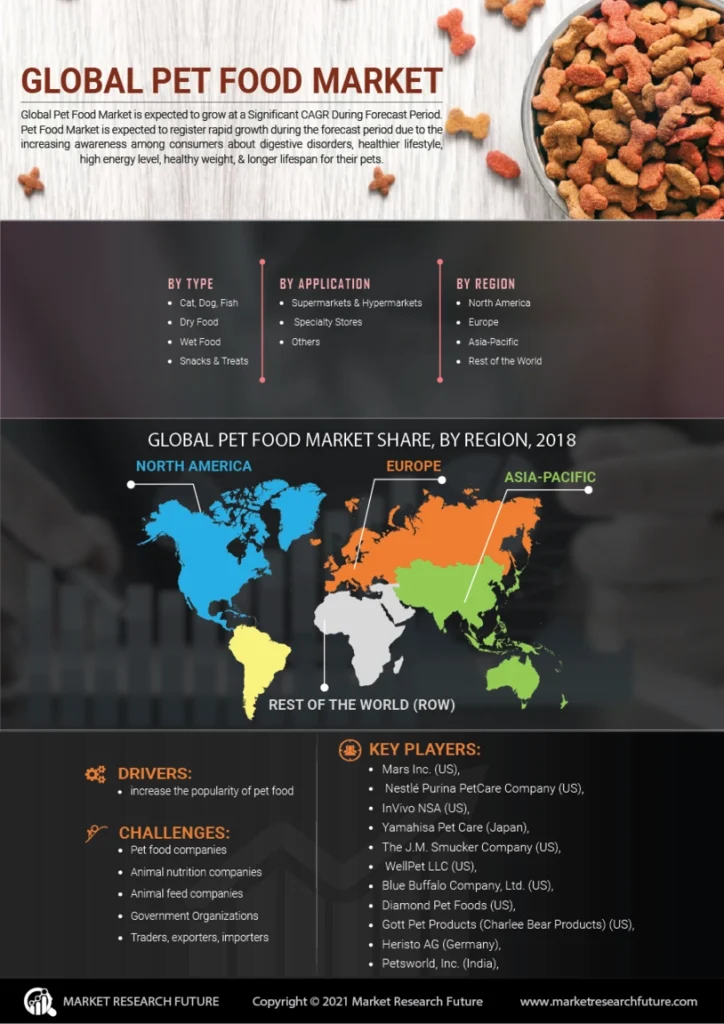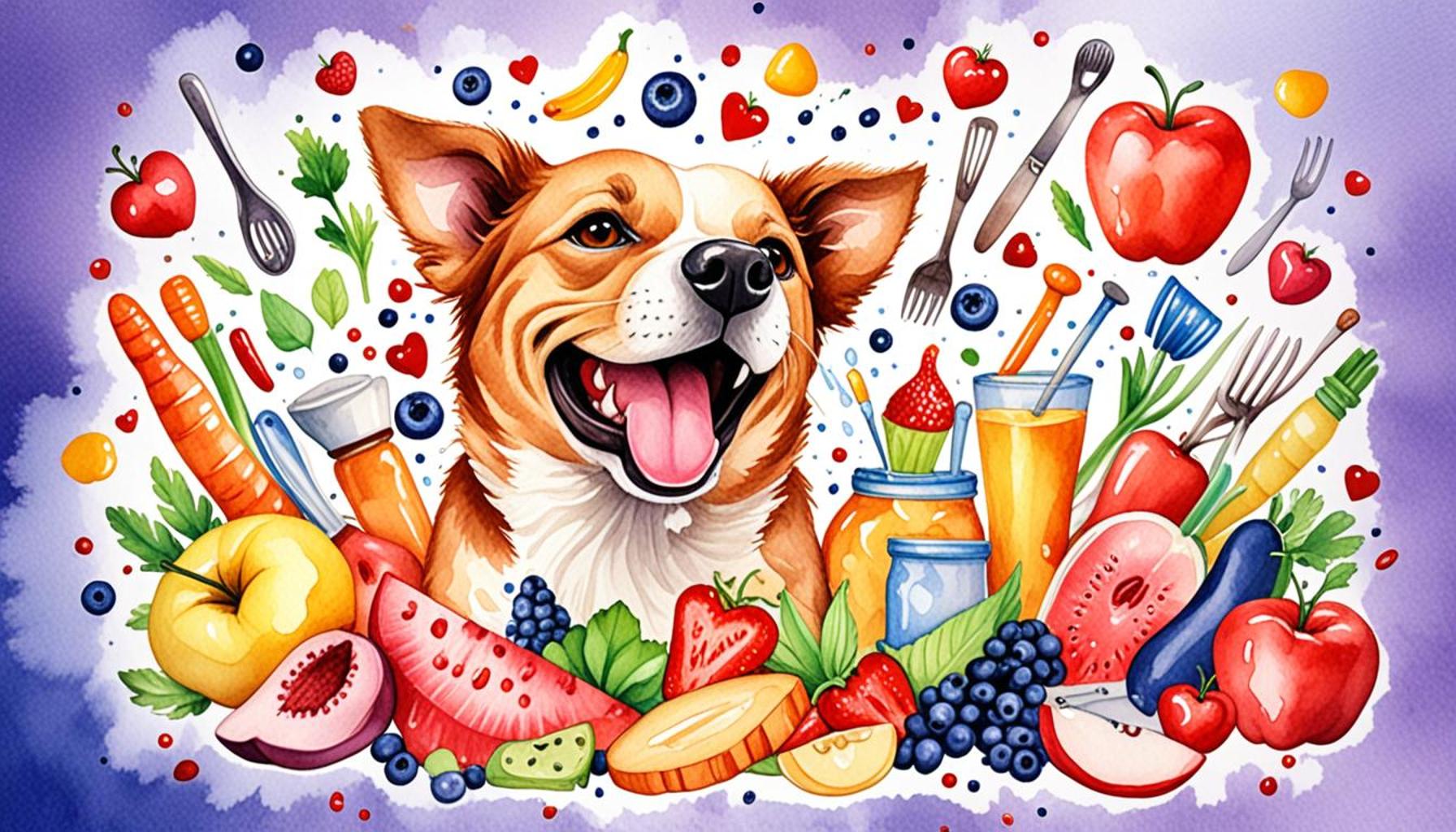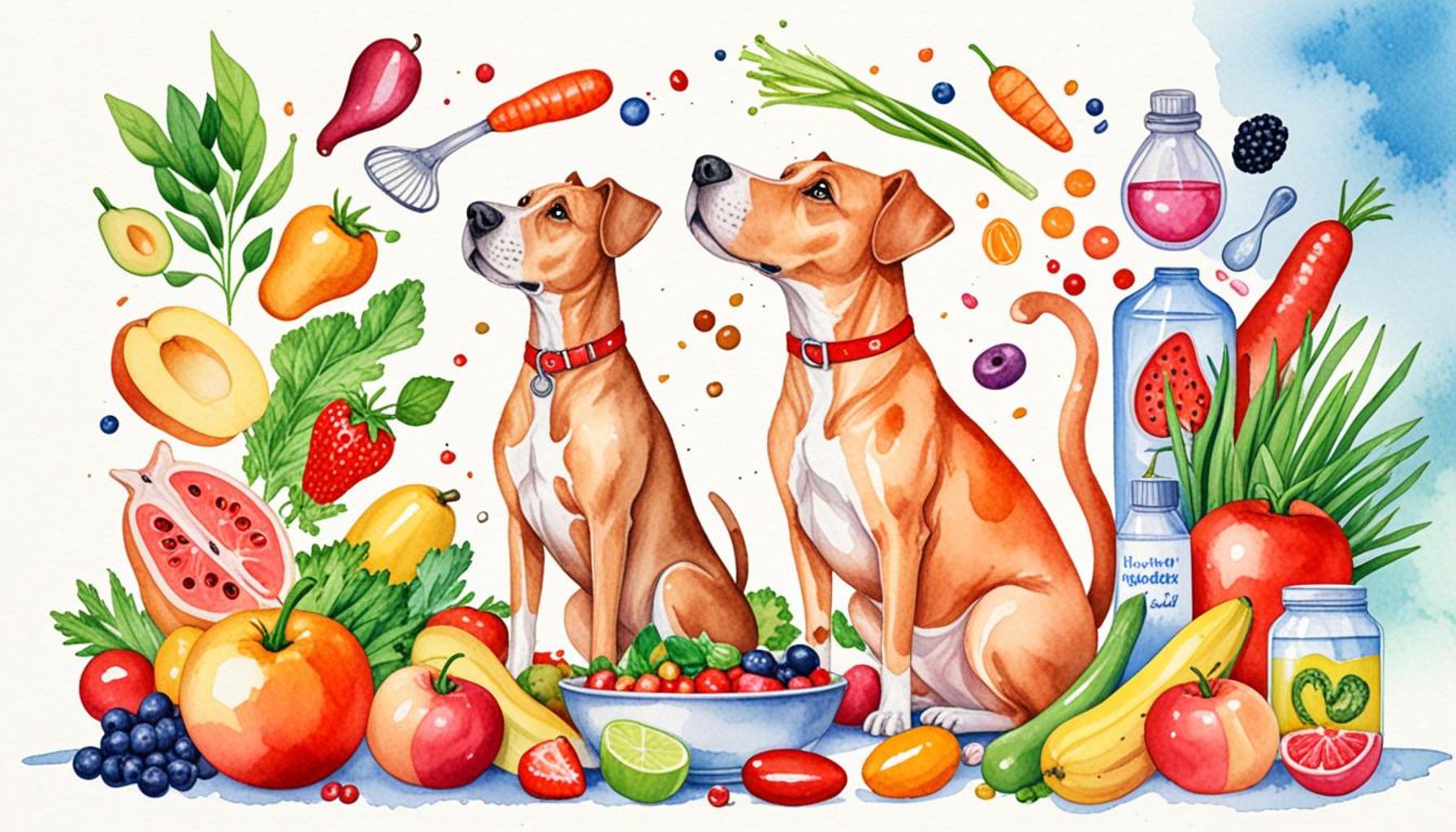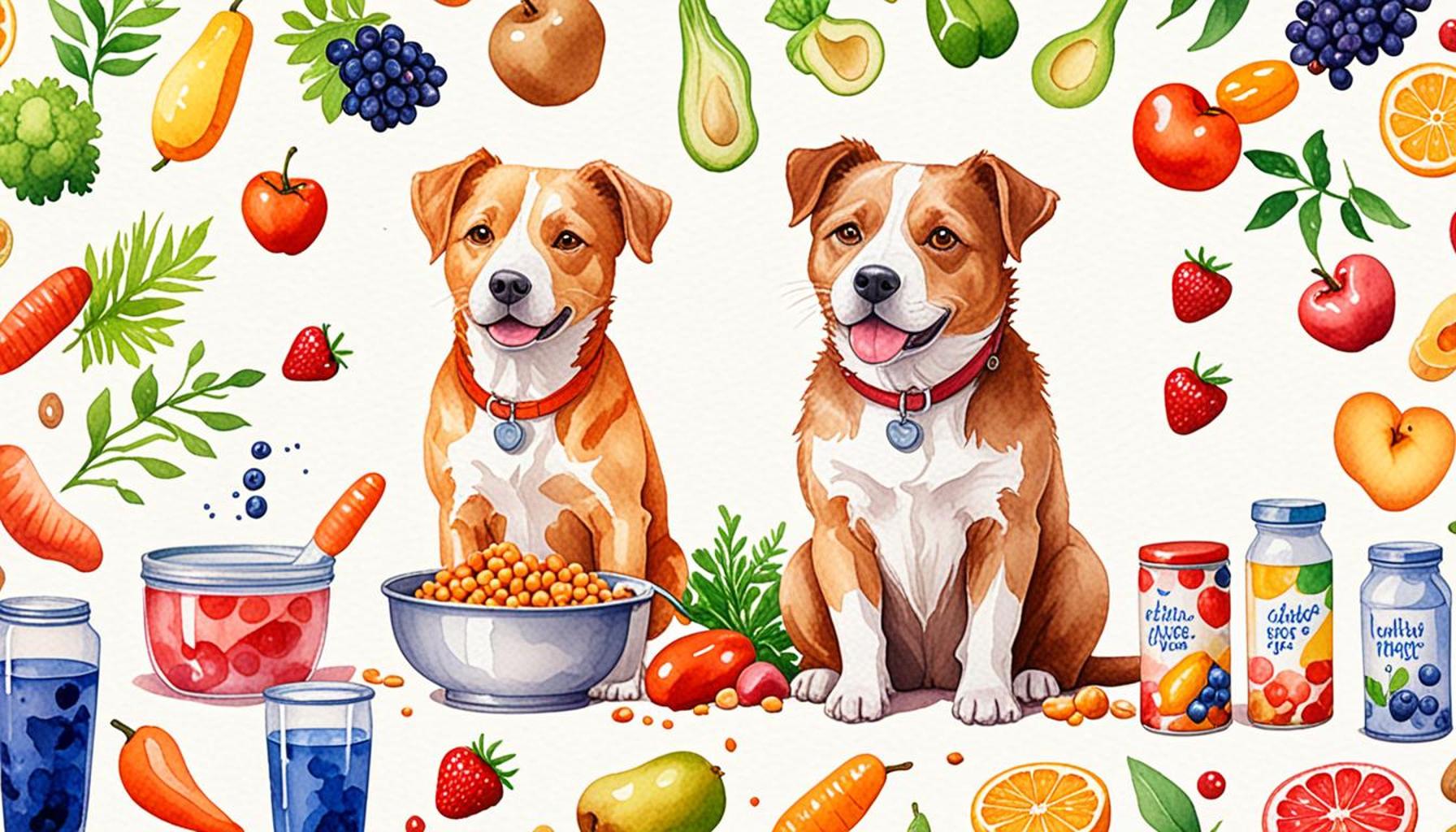Trends in Natural and Organic Food for Pets

The Evolving Landscape of Pet Nutrition
As pet ownership continues to rise in the United States, the demand for natural and organic food for pets is growing rapidly. This surge in pet ownership has prompted a change in consumer behavior, with pet parents becoming more discerning about the food they provide to their furry family members. This shift in mindset underscores a broader commitment to pet health and wellness, driving industry trends and innovation.
Several noteworthy trends are shaping the realm of pet nutrition, revealing a compelling narrative about the evolving preferences of pet owners:
- Whole Food Ingredients: Consumers are gravitating towards products that emphasize recognizable, whole food ingredients. This trend is not merely cosmetic; it reflects a growing belief that pets deserve a diet similar to what humans are encouraged to consume. Ingredients such as sweet potatoes, carrots, and chicken are increasingly favored over artificial fillers or by-products.
- Grain-Free Options: In an effort to enhance their pets’ digestive health, many owners are opting for grain-free diets. This choice can be partly attributed to concerns over food allergies and sensitivities in pets. Grain-free formulations often include alternate carbohydrate sources like peas or potatoes and are popular among certain breeds, particularly those known for digestive issues.
- Environmentally Sustainable Practices: As awareness of environmental issues grows, brands that prioritize sustainability in their sourcing and packaging are experiencing a notable uptick in popularity. For example, companies that utilize recyclable materials or sustainable protein sources, such as insects or plant-based proteins, appeal to eco-conscious consumers who want to minimize their carbon footprint.
- Functional Foods: The rising trend of functional foods is centered on products enhanced with beneficial supplements. Pet owners are increasingly interested in formulations that include probiotics for gut health, omega-3 fatty acids for skin and coat health, or antioxidants for overall wellness. Such products promise added health benefits that can help support pets through various life stages.
- Human-Grade Pet Food: The push towards human-grade quality in pet food is transforming how products are made. This phenomenon sees pet meals crafted with the same level of care and quality that one would expect from a gourmet restaurant. Pet owners are delighted to see transparent sourcing and preparation methods that ensure their pets are eating safe, high-quality meals.
These trends signify a fundamental change in how consumers perceive pet nutrition. With a mounting awareness of the importance of ingredients, sustainability, and health benefits, the market for natural and organic pet food is poised for further growth. According to recent market research, this sector is projected to expand significantly over the next several years, with organic pet food sales increasing at a rate expected to exceed that of conventional options.
For pet owners looking to provide the best dietary choices for their companions, staying informed about these evolving trends is essential. As the landscape of pet nutrition continues to shift, proactive consumers can make enlightened decisions that contribute to the health and happiness of their beloved animals.
DISCOVER MORE: Click here to learn about the best options for your pet

Understanding Consumer Preferences in Pet Nutrition
As the landscape of pet nutrition transforms, consumers are taking on a pivotal role in steering the direction of the natural and organic pet food market. This engagement reflects not only a focus on their pets’ well-being but also an increased demand for transparency and quality in the products they choose. By delving deeper into specific trends, we can uncover the motivations driving pet owners towards these premium food options.
A significant aspect of this evolution is the shift towards whole food ingredients. More pet parents are scrutinizing labels and seeking meals that consist of identifiable ingredients. This trend mirrors the growing consciousness around human diets, where consumers are encouraged to prioritize whole, nutritious foods. Familiar elements such as chicken, fish, or chickpeas instead of vague “meat by-products” are becoming essential to consumer preferences.
Furthermore, the demand for grain-free options has surged, correlating with concerns about food sensitivities and digestive health in pets. Many owners are opting for diets that eschew traditional grains such as wheat and corn in favor of nutritious alternatives like quinoa and lentils. This preference is particularly notable among breeds that are predisposed to gastrointestinal issues, indicating a targeted approach to pet dietary choices.
Aligned with this focus on health is the rising trend of functional foods. These specialized pet foods are fortified with targeted nutrients designed to address specific health needs, such as probiotics for gut health, omega fatty acids for skin and coat health, and antioxidants for overall immune support. Pet owners are increasingly educated about their pets’ dietary needs, making choices that aim to enhance longevity and quality of life.
- Whole Food Ingredients: Labels featuring clear and recognizable items inspire confidence in pet owners.
- Grain-Free Formulations: Alternatives harnessing the power of legumes, roots, and vegetables respond to digestive health concerns.
- Functional Additives: Supplements such as probiotics and omega-3s are becoming standard in premium pet food offerings.
The push for environmentally sustainable practices also plays a crucial role in shaping pet food trends. Pet owners are increasingly concerned about the carbon footprint of their purchases, prompting brands to adopt sustainable sourcing and packaging practices. This includes using recyclable materials and exploring alternative protein sources, such as insects or plant-based proteins, which align with the values of eco-conscious consumers.
Another important phenomenon is the rise of human-grade pet food. This evolving category emphasizes the quality and safety of pet meals, often surpassing traditional pet food standards. Pet owners appreciate the reassurance that their furry friends are dining on premium ingredients comparable to the meals they themselves would consume. This trend underscores a growing belief that pets deserve not just food, but food crafted with love and care.
As these consumer preferences continue to shape the market, brands that resonate with the values of transparency, health, and sustainability are poised to thrive. Understanding these trends will empower pet owners to make informed, conscientious choices about the nutrition they provide to their cherished companions.
| Category | Key Features |
|---|---|
| Ingredient Transparency | Pet owners are increasingly seeking products with clear ingredient lists, fostering trust and informed choices. |
| Health Benefits | Natural and organic foods can enhance vitality, skin health, and digestion, promoting an overall healthier pet. |
| Sustainability | Many brands are adopting eco-friendly practices, appealing to environmentally conscious consumers. |
| Customization | Personalized diet solutions based on individual pet needs are gaining popularity, enhancing pet welfare. |
The trend towards natural and organic food for pets reflects a growing awareness among pet owners regarding the health and well-being of their furry companions. This movement is not only about providing high-quality nutrition but also encompasses the ethical considerations of sourcing and production. As consumers become more discerning, they are demanding full transparency regarding what is included in their pet’s food. Moreover, health benefits derived from organic ingredients contribute significantly to the growing popularity of these products. This trend encourages brands to disclose information that allows pet owners to make informed purchasing decisions, and in response, companies are increasingly adopting sustainable practices that align with consumer values. With the rise of customized dietary options tailored to pets’ unique needs, the landscape of pet food is rapidly evolving, focusing on enhancing the well-being of our beloved animals while remaining environmentally conscious.
DISCOVER MORE: Click here to learn about essential nutrients
The Rise of Personalized Pet Nutrition
In today’s pet food market, personalization has emerged as a prominent trend, driven by owners who want tailor-made solutions dietarily speaking for their furry companions. The concept of personalized pet nutrition goes beyond merely selecting foods based on breed or size; it encompasses bespoke formulas developed based on individual pet needs, health concerns, and lifestyle factors. Brands are increasingly employing advanced technology and data analytics to create meals uniquely suited to a pet’s specific requirements.
Take, for example, an increase in subscription-based services that deliver custom meals right to consumers’ doors. Such models allow owners to answer a few questions about their pets and receive tailored recipes and ingredient suggestions. This convenience not only caters to demand for personalized nutrition but also simplifies meal planning for busy pet parents. According to recent studies, over 60% of pet owners express interest in custom nutrition options for their pets, reflecting a growing trend toward treating pets with the same level of dietary importance that humans enjoy.
Holistic and Raw Diets Gain Momentum
The adoption of holistic and raw diets is on the rise as pet owners seek to replicate what nature intended. Holistic pet foods emphasize a balanced approach that considers the overall health and emotional well-being of pets. Many products in this category are crafted to maintain a well-rounded blend of essential nutrients while avoiding artificial additives and fillers.
Moreover, raw feeding has gained popularity among natural food enthusiasts, with advocates claiming that a raw diet can mimic the ancestral diets of dogs and cats. Proponents argue that raw meats, bones, fruits, and vegetables can lead to improvements in energy levels, coat conditions, and dental hygiene. However, it is crucial for pet owners to approach this type of diet with caution, ensuring that nutritional completeness, hygiene, and safety are prioritized.
Transparency and Authenticity in Labeling
As consumers deepen their understanding of pet nutrition, the demand for clear and authentic labeling has skyrocketed. The phrase “clean labels” has become synonymous with transparency, with an increase in brands pledging to disclose the sources of their ingredients and the production methods used. In fact, a recent survey showed that 75% of pet owners read labels before making a purchase, which highlights a shift towards informed consumerism.
Certification labels from reputable organizations, such as the Non-GMO Project or USDA Organic, also bolster trust. Transparency not only helps pet owners make confident choices but also fosters loyalty to brands that adhere to high standards of integrity and ethics in manufacturing. The consistent visibility of such initiatives stands as a testament to the evolving landscape of the pet food industry, where accountability and transparency are paramount.
Innovative Ingredients and Functional Supplements
In tandem with these trends, innovative ingredients such as superfoods and functional supplements are increasingly being integrated into pet foods. Ingredients like chia seeds, pumpkin, and blueberries are prized for their nourishment and health benefits, appealing to owners seeking holistic wellness solutions for their pets. Additionally, new supplements targeting joint health, anxiety reduction, and digestive wellness in pets are steadily gaining traction in the market.
Furthermore, the exploration of alternative protein sources such as novel proteins (e.g., kangaroo, bison, or even lab-grown meats) opens new avenues for addressing allergies and sensitivities in pets, as many dogs and cats can develop adverse reactions to common protein sources. These inventive approaches not only diversify dietary options but also cater to ethical concerns surrounding conventional livestock farming.
As the market continues to evolve, the interplay of personalized nutrition, holistic feeding, transparency, and innovative ingredients will undoubtedly continue to inspire pet owners to rethink and refine their approaches to pet nutrition.
DON’T MISS OUT: Click here to discover how to keep your pet safe
Conclusion
The landscape of natural and organic food for pets is rapidly evolving, driven by the growing awareness among pet owners regarding the health and well-being of their companions. From the surge in personalized nutrition and subscription services to the adoption of holistic and raw diets, pet parents are becoming increasingly proactive in choosing what they feed their animals. This trend reflects a broader societal shift toward cleaner, more transparent eating habits, mirroring the demands seen in human food markets.
Moreover, the emphasis on clear and authentic labeling plays a crucial role in enhancing consumer confidence and fostering brand loyalty. With approximately 75% of pet owners reportedly reading labels before purchasing, the spotlight is firmly on companies that prioritize transparency and ethical practices. As pet owners continue to delve deeper into the world of pet nutrition, the incorporation of innovative ingredients and functional supplements is bridging the gap between what pets need and what pet owners desire for their health journey.
In conclusion, the emphasis on quality, personalization, and transparency in pet food will likely remain a pivotal aspect of consumer choices moving forward. As trends continue to shift towards more informed and conscientious pet ownership, the industry must adapt accordingly, enriching the lives of pets with nourishing and ethical food options. For pet owners, the journey into the world of natural and organic options is just beginning—one where curiosity and commitment to health continue to guide their choices.


